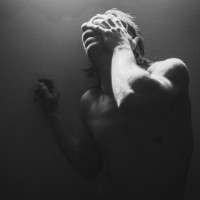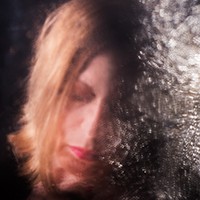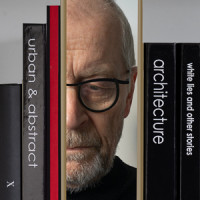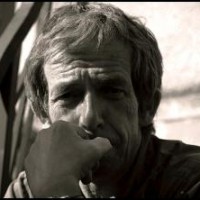SEARCH






|
|
|
|


by Editor Susanne Stoop
In very ancient art history and less ancient times, the gods and goddesses were imagined as nude creatures. Later - by now in this very condensed history of art, we have arrived in ancient Greece - the goddesses got dressed, while the gods were represented as strong, muscular male nudes.
They were like the athletes who performed naked for an audience of men - the women were not supposed to attend the Olympic and other athletic games. Even at the heyday of Greek sculpture in 400 BC, the goddesses, the amazons, young girls and so on, were all dressed in long robes. A century later however a nude Aphrodite or Venus arrived shyly on the scene. In various appearances she never left it, while the male nude became a minority, which is a bit strange since from the Middle Ages until half way the nineteenth century only men were allowed to pose in the art academies. Women weren't admitted - not as a model or as an artist.
The way the ancient Greeks represented the male nude has been of great influence on painting, drawing, sculpture and photography. You see it back in Roman sculpture, in Renaissance art and so on until our own days.
The disco bolus or discus thrower
The ancient Greeks celebrated the body as an ideal - an ideal state of health, youth and geometric proportions. The best-known example of this celebration is the statue of a disco bolus, which tells it all. The original is long lost, but it has been copied by Roman artists and has been a source of inspiration for sculptures and photographers.
It is not easy to create a more or less original photograph with an iconic statue as the starting point. It inspired the legendary and controversial German photographer Leni Riefenstahl (1902-2003). Jaap de Jonge was also inspired by it.
Jaap didn't choose to celebrate the body in the Greek way or in other nude male photographs in which just about every muscle and bone is highlighted as in Bruno Birkhofer's interpretation of the discus thrower.
Jaap's picture is subdued and introvert. It seems that he is not interested in the muscles, but in the spirit of the athlete who is concentrating before throwing the discus.
Bruno's photo tells quite a different story. It is an extravert story, which radiates masculine strength and power. And although the athlete seems to be in deep thought, I get the impression that it is more about the body than the soul.
The female disco bolus
In his book "Ways of seeing" (1972) the British art critic, novelist, painter and poet John Berger observes that "Women are depicted in a quite different ways from men - not because the feminine is different from the masculine - but because the ’ideal" spectator is always assumed to be male and the image of the woman is designed to flatter him."
No photograph can better illustrate this observation than "Agis" by Leszek Paradowski. Contrary to the photographs of the male discus throwers, the female disco bolus isn't showing the athletic powers of her body. Her body is used to please. And by pleasing her body becomes an object for eager eyes, instead of a strong, athletic human being, which is photographed for its sheer beauty like the two males.
But it is not only men who'd rather see images like "Agis" then those of the male discus throwers. The American sociologist Beth Eck has shown that both men and women feel at ease at the sight of female nudes. That changes at the sight of male nudes. Female viewers felt uncomfortable, nervous, embarrassed or felt that the images were absurd. Heterosexual men were worried about their sexual nature at the sight of male nudity. Also both women and men find it difficult to talk about images of naked men.
Speaking for myself, I have no problems viewing male nudes, but I do feel uncomfortable when seeing a female nude that is too obviously photographed to please the male eye. I wonder about your views! It could be a nice discussion!
The story of Adam and Eve
With the arrival of Christianity the nude male and female almost disappeared from western art. Only a nude Adam and Eve were tolerated, because it revealed their sin. Jesus and some martyrs were depicted with a bare torso as to show their sufferings. Being naked was no longer associated with the male athletics or female fertility of the old world before Christ, but with weakness and defencelessness.
Things changed at the end of the Middle Ages, when the Italians discovered their long forgotten heritage of ancient Rome. Once again the nude body was celebrated.
And that is what Jörg Heidenberger also did when he portrayed his Adam and Eve with a wonderful sense of cheeky humour. Beautiful, strong bodies of two proud people are shown. Far away are feelings of shame and remorse of the Middle Ages!
Arkadiusz Branicki called his photo M&W, but this couple could also have been Adam and Eve. They were - and I am very well aware that this might not have been the intention of the photographer at all -, so to speak, photographed at the moment they were about to leave the Paradise, Adam protecting a rather remorseful and submissive Eve. The photo seems to symbolize that man and wife are no longer the equals they were before the original sin. Or to put it stronger: the female has surrendered to the dominant male. It characterizes the relations between men and women in the visual arts.
Of course, this is not always true. Take the ballet photographs by King Douglas.
In these three photos - which are meant to be a triptych as you can see at King's website the women and the man in their ballet poses are equal. There is no difference between them. The man's body doesn't express the usual image of the strong, powerful man; nor do the females have that please-the-man attitude. They use their bodies to express feelings, to tell a story and when we watch them, we see these feelings and the story and forget about the body.
Naked or nude?
There is quite a difference between being naked and being nude. The British art historian Kenneth Clark (1903-1983) stated that being naked is to be without clothes, whereas the nude is a form of art. For him a nude is a way of seeing.
John Berger explained the difference between naked and nude as follows:
"To be naked is to be oneself. (...) A naked body has to be seen as an object in order to become a nude. Nakedness reveals itself. Nudity is placed on display. To be naked is to be without disguise. To be on display is to have the surface of one’s own skin, the hairs of one’s own body, turned into a disguise which, in that situation, can never be discarded. The nude is condemned to never being naked. Nudity is a form of dress."
If you compare the photographs "What a shower" by Gerard Sexton and "Stranger" by Benoit Paille with those shown earlier, the difference between naked and nude becomes quite clear.
The two have nothing of the pose and polish of the discus throwers inspired by the examples of the ancient Greek and Roman statues. We see five burly guys having fun in a bathroom and on the other photo a sad man in his kitchen, whose raw nakedness seems to symbolize the nakedness of his being after the death of his mother, with whom he lived in his apartment. Bereft and all alone.
The vulnerable man
There weren't many emotions to be seen in the sculptures of the gods, priests, athletes and so on of classical Greece. That changed by the time Rome started to be centre of the Western world, when the sculpted, muscular gods and priests wriggled in all corners to express their fierce emotion (see Laocoön and his sons). It was all very theatrical and in fact it doesn't rouse any emotion in the viewer.
In the Middle Ages, the emotions on paintings of an almost nude Jesus and some martyrs were much more restrained. But gradually more and more theatrical emotions crept into the paintings and sculptures. It was not real, not lived through. Actually the French sculptor Rodin (1840-1917) is the one of the first artists who could convey those emotions.
Rodin believed that a sculptor should create "new classics" - but without regard to traditional standards of beauty and ugliness. Like the impressionist painters he didn't want to give his sculptures the outward appearance of " finish". He preferred to leave something to the imagination of the beholder.
I involve Rodin in this review because Edith Hoffman's photo "Emotions" made me immediately think of Rodin's sculptures "The three shades" and "Adam"
Later I found "Hurt" by J Thomas Simpson as pendant to Edith's image.
A man who shows his emotion is vulnerable - how often hasn't it been said, that big boys don't cry? Especially a strong man is supposed to supress his emotions. It is nonsense of course and thank goodness times are changing.
There are several ways to show emotions in an image: by body language, gestures or by a combination of the two and by mood. Rodin's art is a combination of mood, body language and gestures. And this is also visible in Edith's photo.
With soft tones and beautiful light, Edith creates a mood that strengthens the emotional body language of her model. Details are of no importance; we don't need to see any facial expression of emotion. You can feel it and that’s what this photo is about: it is more feeling than seeing.
J Tomas Simpson's photo on the other hand is all gestures. It is more in the style of the Classics and their neoclassical successors. Emotions are depicted, but nevertheless the outer shell is of more importance than the inner. There is nothing left to guess about. It is so to speak a bit like what you see is what you get. By this I am not expressing a value judgement about J Thomas's photograph. The one is not better than the other. At most the one photo appeals more to me than the other, just as I love Rodin more than the neoclassical sculptor Antonio Canova (1757-1822).
 | Write |
 | King Douglas I don't know when this was published, but I believe that I am late to the party. Thanks you so much, Susanne and Yvette for making my triptych a part of this article and for the insightful comments on my work.
|
 | Hilde Ghesquiere Wat een prachtig attikel, Susanne. Proficiat |
 | J Thomas Simpson Thank You Susanne, for your feedback on my photo, I appreciate the kind words and am humbled to be a part of this discussion! :) |
 | Edith Hoffman Great follow up Yvette and Susan, well done. Wonderful images and I am happy to be part of it, thank you so much. The male nude is much less popular than the female nude and that surprises me. Still there is a taboo and people can't be open and look with an open mind to these art forms. Have a lovely evening and it was a great read :-))) |
 | Susanne Stoop Glad you liked it, Edith! Hope the article helps to break the taboo a bit. |
 | Edith Hoffman Yes, Susanne you did a really good job! I hope so too :-))) |
 | Luc Vangindertael (laGrange) CREW Proficiat Susanne en Yvette voor deze 2 mooie bijdragen. Mooi en interessant, sterke foto keuze ! |
 | Susanne Stoop Dank je Luc! Het was spannend en leuk om dit artikel te schrijven. |
 | Yvette Depaepe CREW Prachtige "studie", Susanne!!! Je hebt jezelf weer eens overtroffen!!! |
 | Susanne Stoop Vele mercietjes!
|
 | NotLostinFrance. Excellent follow up Yvette and Susan :)
|
 | Susanne Stoop Thank you! |